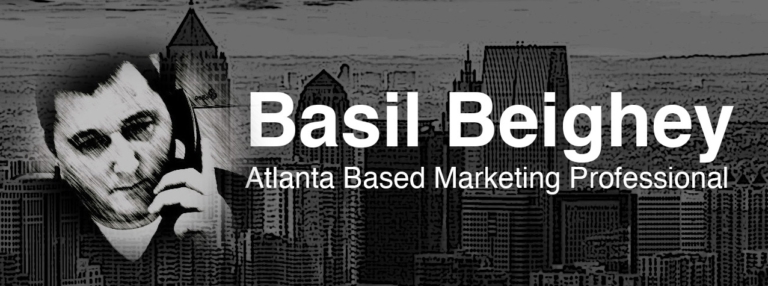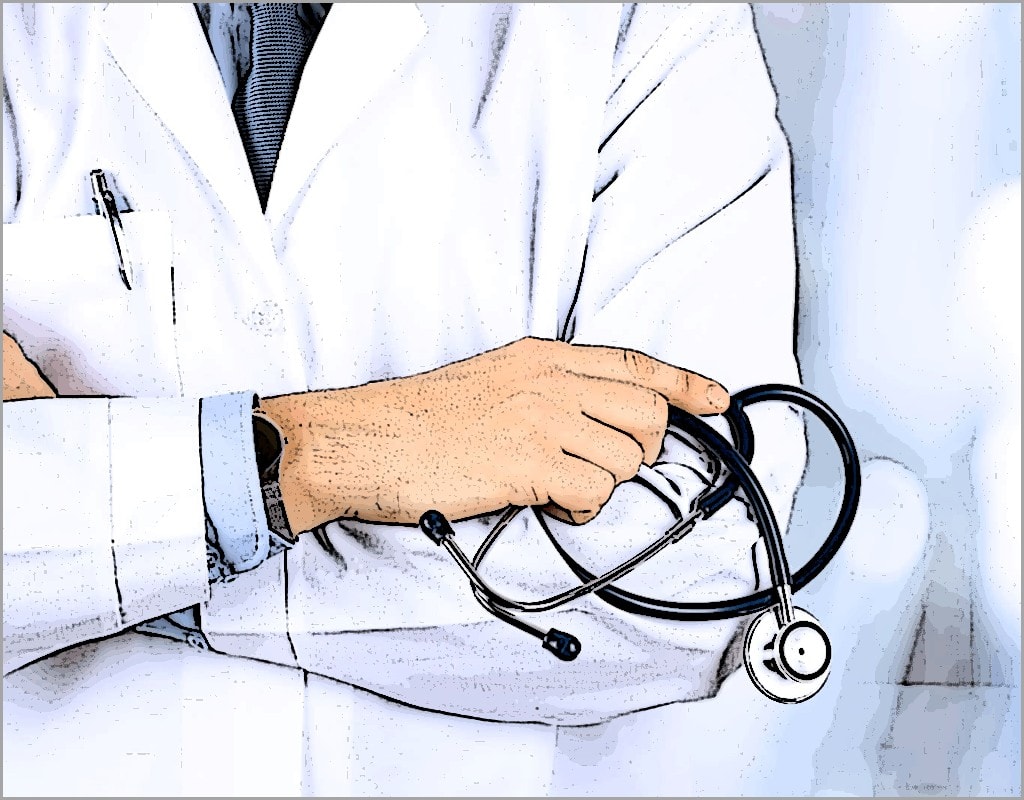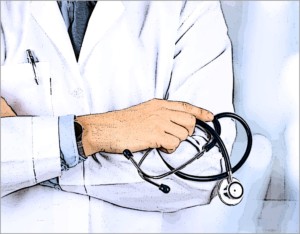My late father was a dentist. When I was a young child, I fondly remember him periodically bringing home fish, venison, or baked goods for dinner which some patient had bartered for his services. Back then, a tooth filling cost about twenty dollars and most patients reached for cash instead of insurance cards at payment time. The majority of patients paid immediately after treatment. Those that didn’t pay immediately received a bill directly from my father listing the treatment they had received and the charge for each procedure in plain English. Patients then paid monthly installments on those procedures without any interest added. If the patient was struggling financially, they paid what they could and sometimes bartered for the difference. But, to my recollection, everyone received the same quality treatment regardless of their perceived ability to pay.
At that time, the medical business seemed like any other professional services business. Except for his medical diploma, medical license, and “Dr.” salutation, my fathers business seemed just like the TV repairman, the plumber, the lawyer, or the public accountant.
It seemed like a great system. My father made a good living and was well respected in the community. His patients received the quality care they needed and we sometimes got fresh fish for dinner!
So how did the medical industry get so expensive, corrupt, and inaccessible to average income patients in the last fifty years? Many papers and books have been written by people much smarter than myself regarding the solution to our “national health care crisis.” But I sincerely believe that the answer is quite simple. I believe that if legislators were willing to propose simple rules (or repeal existing rules as the case may be) regarding the following five issues, the medical services industry would quickly return to the days of yore when prices were reasonable, service was good, billing statements were unambiguous, and everyone received decent medical care.
Step 1: No Group Insurance and Universal Acceptance
I love insurance and regard it as a cornerstone of modern capitalist society. The concept of insurance is simple: some people suffer expensive tragedies – fires, floods, serious accidents, and medical disease – but most people don’t. If a large group of people contributes a small amount of money to a disaster fund. When expensive disasters occur, the damage or treatment is paid for out of that huge pool of money. The only problem with regard to medical insurance is that many people can’t buy it because of “pre-existing medical conditions.”
If you’re lucky enough to “belong” to a large corporate or political group, the group can advocate on your behalf and assure your acceptance. But if you try to purchase insurance as an individual, any medical condition you incurred previous to the issuance of the policy can be grounds for non-acceptance or post-policy denial of service.
The solution is simple: outlaw all group insurance and initiate universal individual acceptance. Pass a simple law requiring all medical insurers to offer only individual policies – no group plans or group rates. Further, every person must be accepted and insured “blindly,” without regard for medical history. Medical insurers must base their rates and actuarial tables on the “population at large.” In other words, a certain predictable percentage of the general population requires medical treatment each year – base insurance rates on that number.
In addition, individual rates must remain the same for each policy category. In other words, insurers cannot increase premiums on one individual without increasing premiums “across the board” for all individuals insured by that particular policy.
This one small step would effectively turn the whole United States into one large group for insurance purposes and assure acceptance for every citizen.
Step 2: Standardized Basic Insurance Policies
One thing the government does really well is to enforce standards.
One day as I was pumping gas, I noticed the green sticker on the gas pump issued by the Department of Agriculture certifying that that particular pump was, in fact, pumping certified U.S. gallons. I was suddenly overcome by a warm, fuzzy feeling. It hadn’t occurred to me that I never worried about gas stations “ripping” me off by “shorting” me – selling me less than a gallon for the advertised gallon price. Because the Department of Agriculture makes routine and random, inspections, most motorists simply choose where to purchase gasoline by comparing the posted price per gallon and never concern themselves with the accuracy of the unit itself – the gallon. This enforced standard, The Department of Agriculture certified U.S. gallon, makes finding the best price of gasoline a very simple process.
Here is another example. If you want to sell firewood in the U.S., you have to sell it by the “cord.” The cord is the only legal standard measurement of firewood. I know this because my buddy sold firewood at a roadside stand. He had a sign that said: “firewood – $5 a box.” One day he was visited by a representative of the Department of Agriculture and was told to remove the sign and instead use the equivalent cord measurement for advertising purposes! My buddy complained at the time, but using the cord measurement allowed passing customers to compare his prices to advertised prices they had seen, say, in the newspaper.
I wondered if the same procedure could be applied to medical insurance. What if the Department of Agriculture put green stamps on three medical insurance policies – Basic Medical Coverage, Extended Medical Coverage, and Full Medical Coverage? Further, every medical insurer in the U.S. had to offer those three legally accepted standard measurements of insurance? Insurers could offer other additional policies and charge whatever they wanted, but if they wanted to be medical insurers, they were required to offer those three standard measurement policies – basic medical insurance would then become a commodity, just like a gallon of gas or cord of wood.
This policy standardization would make selecting the cheapest insurance as easy as finding the cheapest gas. Customers would be empowered to shop the lowest, most efficient insurers knowing that they would receive the same guaranteed coverage for less money.
Step 3: Make it Easier to Become a Doctor
When I was an undergrad at Penn State, a boyhood friend of mine was simultaneously attending the Penn State pre-medical program. He graduated with a 3.99 GPA and it took him two years to get accepted into an accredited medical school. Why is that? Here was a guy that had been dissecting frogs since he was twelve years old with a near perfect grade point average and he couldn’t get into medical school. But that’s not even the most incredible part of the story. This was not an unfunded orphan with no references or connections – his father was a respected doctor with many peers, colleagues, and alumni associates in the trade!
If medical schools are turning away scores of ideal, funded, candidates, there is only one plausible explanation – there are not enough medical schools in the U.S. capable of conferring the credentials necessary to practice medicine.
Since the beginning of time, trade groups, guilds, and “associations” have lobbied governments for legislation which would restrict entrance into their industry. In economic terms, it’s called a “barrier to entry.” This practice has the effect of artificially raising the rates and fees of tradesmen by restricting supply. The American Medical Association and Accrediting Council for Continuing Medical Education, to name just two, are such groups.
The AMA has long lobbied for legislation which strengthens drug laws and restricts the number of “certificated” medical schools (which effectively restricts the supply of doctors) thereby ensuring that a limited number of “Medical Doctors” remain the only legal drug dealers allowed to do business in the U.S. I’m not alone in making this charge. Nobel Laureate, Milton Friedman (http://en.wikipedia.org/wiki/Milton_Friedman) was the first to point this out.
Backed by the AMA, the ACCME is the organization that sanctifies medical schools. Their strict accreditation is the basis for many state medical licenses. Their lofty requirements effectively eliminate the possibility of many small colleges offering “accredited” continuing medical education (CME). Without a state medical license, a doctor can’t prescribe drugs. This has the effect of limiting the number of trained medical professionals and keeps fees high.
The federal government could easily streamline the process of becoming a Medical Doctor by formulating two federal examinations – one for general practice and one for basic surgery. Any student who could pass the test(s) would be allowed to “practice” basic medicine (general practitioner) in all fifty states.
This federal test would have the effect of immediately expanding the number of both medical schools and the number of doctors by offering a fixed set of requirements that any university could easily target with a graduate program.
More medical schools and more doctors mean lower fees for everyone.
If an individual wanted to visit only an ACCME accredited doctor, that’s a personal choice. But why not open up medical care to the many qualified individuals that want to practice medicine but are unable to attend an expensive and limited “accredited” medical school?
Step 4: De-Criminalize Health Care
Here’s a mental game I like to play. Once in a while, I like to amuse myself by asking a simple question: “If I were somehow transported back in time, knowing just what I know now, could I change history in a big way?”
Let’s play it now.
If you and I were transported back to London in the year 1347, could you save anyone from a pandemic that killed one-third the population of Europe and 75 million people worldwide – the “Black Death?”
Are you ready?
Let’s start by assimilating what most people know about the Black Death. It is widely believed today, that what was known as the “Black Death,” is what we call today, the Bubonic Plague. Most high school seniors know the Bubonic Plague is a bacterial infection transmitted primarily by fleas – in 1347 London, fleas on rats.
So, what could we prescribe, could we save anyone or change history?
First, and maybe most importantly, we would know what doesn’t work: vinegar and rose water rubs, lancing skin sores, general bleedings, and other assorted witchcraft. This advice alone would save many lives.
Let’s go further. How about advising locals to kill all rats on site? How about cleaning up trash and transport it to the outskirts of town? What about using natural flea repellents on the skin such as citrus oils?
But what about the infected patients? How about advising the isolation of the infected? Not touching sores? Covering the mouth and nose when in close proximity of a patient?
What about treatment? How about growing mold cultures on bread and feeding it to patients? If someone would recover, use that particular mold source as the “mother” for the future mold cultures until an effective antibiotic was discovered?
The point to this exercise is this: a little bit of real knowledge can account for a lot of alleviated misery with regard to health care. Although I have no specialized training in treating infectious diseases, I am certain there are people in the distant past and even it the present world that I could help, maybe even save. Why then in our modern society do we place restrictions on who and who cannot provide medical advice and treatment?
It is my contention that many trained professionals such as nurses, paramedics, pharmacists, and medical technicians currently possess the knowledge and experience necessary to counsel patients and prescribe general treatment if they were allowed to do so. Imagine a world where the first stop for general medical treatment, say a runny nose or cough, was not the doctor’s office, but rather the nurse’s office. Imagine also that that nurse had the legal right to draw blood, run tests, and prescribe any necessary drugs. After all, how many minutes do you really “see” the doctor when you visit anyway? Five minutes out of an hour and a half visit?
Would the costs of health care be affected by tens of thousands of additional health care professionals opening offices and beginning private practice? Would competition between these new medical venues for your business lead to a better experience for you and your family? Would such a system make medical treatment available to many more poor unfortunate souls? You bet it would!
I’m not suggesting that doctors are unnecessary; on the contrary. I’m suggesting that is beneath a professional with a doctors level of experience and education to treat common colds. Doctors should be reserved as specialists and surgeons – called upon only after basic, general examinations and treatments have been administered. I am suggesting a whole new layer of health care – the legal nurse or medical practitioner.
Step 5: De-Criminalize Drugs
This is perhaps the most controversial of my recommendations; but also the most powerful. The de-criminalization of all drugs is an emotionally charged issue to be sure. But in a “free” country, if a person does not own his body and have dominion over it, he owns nothing. More importantly with regard to health care, the restrictions and outright criminalization of the ownership and experimentation with certain drugs has done as much to diminish our national health care experience as any other factor.
I’m not suggesting a society where a five-year-old can buy opium “over the counter,” but I am suggesting that a terminally ill patient after consulting with his medical practitioner, can buy anything necessary to diminish his or her suffering without fear of reprisal from governmental authorities. The control of drugs is the control of health care and the restriction of drugs with regard to research and distribution severely increases expense and increases unnecessary suffering by retarding distribution.
The vast majority of “bad press” associated with drug de-criminalization comes from a basic misunderstanding of cause and effect. It has always been assumed that drugs cause crime. In reality, crime is an effect of the systematic criminalization of drug possession and distribution. As evidence, I offer the well-known situation regarding alcohol and tobacco. Both of these drugs kill far more people each year than “angel dust,” cocaine, and heroin combined. Yet virtually no crime is associated with the legal ownership and distribution of beer or cigarettes. Millions of people drink and smoke legally without incident. This is not to say these drugs don’t cause problems, they do. But the problems are best dealt with by educating people to the adverse effects of overindulgence and irresponsible use.
Users and dealers of illegal substances, however, cannot turn to authorities when a deal goes bad. They must take matters into their own hands and violence usually follows, often with innocent bystanders caught in the crossfire. But by far, most of the petty crime regarding illegal drugs (prescription or recreational) results from the high prices sick people and addicts must pay to cover the extreme expense associated with keeping the industry secret and “underground.” If de-criminalized, drugs such as cocaine would cost pennies a gram instead hundreds of dollars. Once de-criminalized, the abuse problems can be attacked with the only weapon that really works in the “war against drugs” – education.
With regard to health care, ultimately regulations regarding who may legally prescribe drugs and who may legally manufacture drugs determine the supply of health care available to patients. Any restrictive laws cause friction and ultimately unnecessary expense to patients. Governments should focus on public education regarding the dangers of drug use and the standards regarding quality, safety, and purity.
It always astounds me at the visceral reaction this proposal incites from most people. It’s as if they think we’ll turn into a society of opium addicts is only given free choice. It’s my suspicion that the reaction is a reflection of a deeply repressed demon hidden in the core of most people crying to be set free. They’ve never known real dominion over their bodies and are petrified at the prospect of real freedom. Know this, no one cares for your body more than you. You are in the best position to make an informed decision with regard to what you put in your body.
At the very least the government should allow citizens to buy prescription drugs anywhere they can find them for the lowest price – Mexico, Canada, anywhere, – and purchase them by mail.





